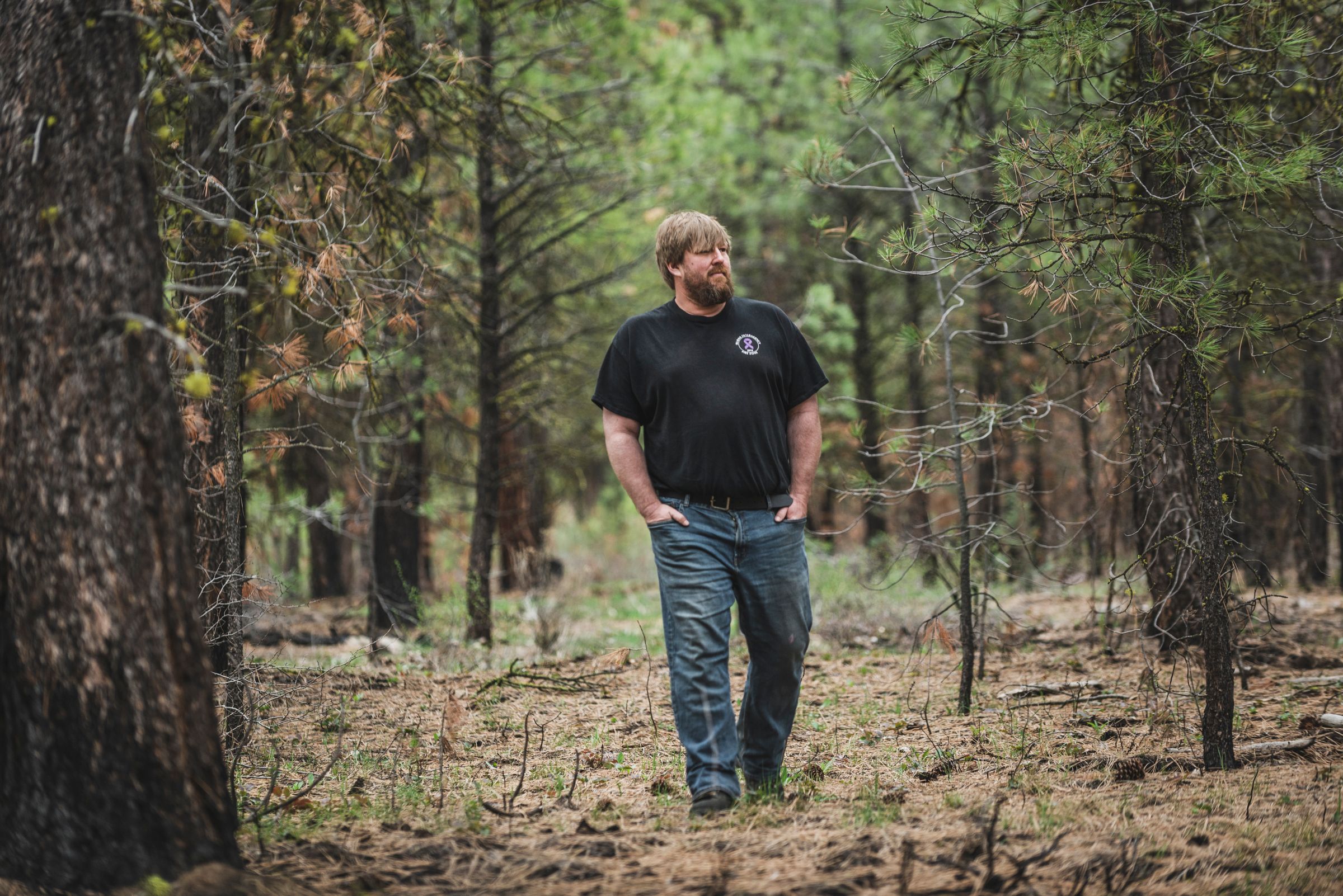Tim Boyce, Prescribed Fire Specialist

Meet Tim Boyce, Prescribed Fire Specialist with the U.S. Forest Service Malheur District who is responsible for oversight of the prescribed fire and fuels reduction program on the Emigrant Creek Ranger District. In other words, he’s the guy who puts good smoke in the air from carefully planned prescribed fires. “Historically speaking, fire played a role in many ways across what is now the Emigrant Creek Ranger District. Both planned and unplanned fires occurred frequently and therefore burned at lower intensity because understory vegetation (what grows between the forest canopy and forest floor), surface litter & duff, (dead plant material on the forest floor) and downed woody material on the ground were never able to accumulate to the volume we see on the forest today. Working to return these landscapes back to more resilient, fire tolerant ecosystems is what matters.”
For Harney County this means the work Tim and others are doing today will create a multi-use, more fire tolerant, and resilient landscape that can be sustainably managed, supports wildlife diversity, and can be enjoyed for many years to come. “The more we can burn under the conditions we choose versus the conditions that occur on the hottest, driest and windiest days of the summer, the more likely we will see desirable fire effects. The work we do is challenging, but also necessary if we want to see a landscape that is less likely to allow a large, high severity, and catastrophic wildfires we see occurring these days.”
Prescribed fire doesn’t just happen, there is a lot of research, study and preparation. As each year begins Tim and an experienced prescribed fire crew are busy planning for the upcoming year’s prescribed fire implementation which can include preparing maps, analyzing fire behavior, determining equipment and other resource needs while reviewing objectives for the season. There is also heavy emphasis placed on reports (which can include proposed actions for fire fuel treatments) for the National Environmental Policy Act (NEPA) analysis.
As spring and summer roll in, field season (the time of year when prescribed burns can take place) hits full stride. This could mean looking at future project planning areas for NEPA analysis, evaluate residual fuel loads (material like logs left behind) in commercial and non-commercial treatment units, and several site visits to future prescribed fire units, including both pile units (piles of slash, i.e. tree tops, branches, etc.) and underburn units. From this field work Tim and the prescribed fire team begin to develop a fall/winter pile burn plan, additional prescribed fire plans for late summer/early fall underburning, further NEPA analysis, and a sense of general fire danger and wildland fuel conditions across the district to help inform management decisions when wildfires occur. Another important role during the summer is assisting with the management of wildfires on the Burns Interagency Fire Zone. The Burns Interagency Fire Zone is comprised of personnel from the Emigrant Creek Ranger District, Bureau of Land Management and the Malheur National Wildlife Refuge. Combined, this group has responsibility for fire management on about 5 million acres.
In early fall while still substantially involved with fire suppression efforts, prescribed fire implementation returns as the primary focal point. Weather forecast and fuel moistures are all closely monitored to determine when planned prescribed fires can occur. As the year wraps up the months are filled with implementing a pile burn program, completing end of the year reporting including looking at successes and where improvements can be made. This is also time when Tim and the team can catch a breath before this all starts again the next year.
Added to this workload is Tim’s involvement with the Harney County Restoration Collaborative. “Having worked with collaborative groups in the past it wasn’t even a question of whether I should be involved when I first accepted my position on the Emigrant Creek Ranger District. It’s simply the right thing to do and I was looking forward to being part of a group that I truly believe wants to work together to achieve multiple objectives on public lands. Having a collaborative group is a great way to give individuals in a community an opportunity to be heard before or during project development. Members of a collaborative are exposed to educational presentations, external and internal specialists, and other passionate individuals that just want to be heard. Through the process, whether we agree or disagree, relationships are fostered, and trust is built. The group itself can become a conduit for information flow to and from the surrounding community.”
This collaborative effort helps with the challenges that come with prescribed fire and the public’s comfort level with understanding this fire prevention tool. “To openly communicate, educate, and collaborate on what a healthy forest looks like and what a healthy forest can offer economically, recreationally, and in terms of wildlife habitat is an amazing opportunity.”
To access information about prescribed burns visit InciWeb.
